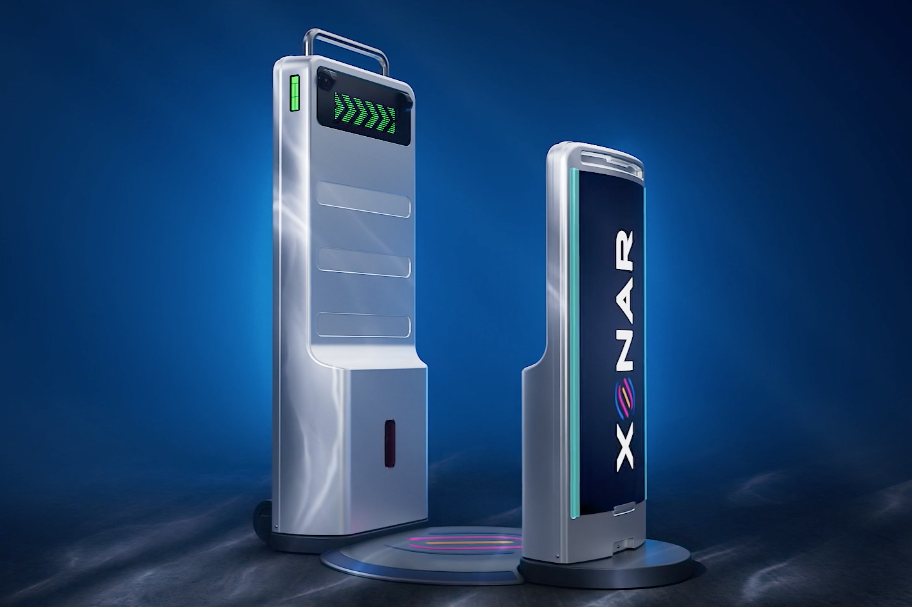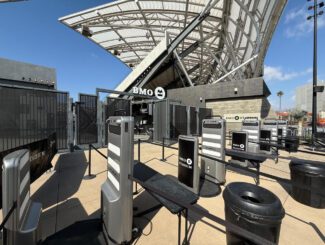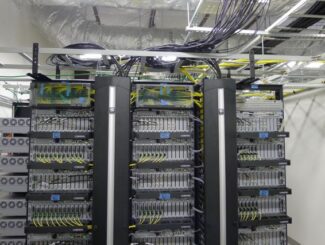
Company: Xonar Technology
Products: Xonar TruePort ; Xonar TrueScan
What it looks like: TruePort: Two large flat panels, one larger than the other. TrueScan: A fold-out version of an X-ray scanner line
How it works: TruePort: People walk through the two panels, one at a time. The panels are designed to clam-shell together for ease of deployment by a single person. There are LED panels on the top for alert communication, and the company said production systems will also include a camera option for possible facial recognition integration. TrueScan: People put bags on track, which pushes them through scanner. Staff watches screen for yes/no message about any threats.
Expertise: Professor Kamal Sarabandi is a member of Xonar’s Advisory Board. Kamal is the Fawwaz T. Ulaby Distinguished University Professor of EECS and the Rufus S. Teesdale Endowed Professor of Engineering at The University of Michigan. His research areas of interest include microwave and millimeter-wave radar remote sensing, Meta-materials, electromagnetic wave propagation, antenna miniaturization, and bio-electromagnetics. Xonar has also hired Hans Hufschmid as Chairman and CEO. Hufschmid has experience in startups and corporate finance.
Profile Update, 3/7/25: The TruePort security scanners from Xonar got their U.S. professional stadium debut last month, when the Xonar systems were deployed at BMO Stadium in Los Angeles, home of Major League Soccer’s Los Angeles Football Club (LAFC).

With $10 million in recent funding ($5 million from friends and family and $5 million from a Series A round), Xonar is well financed and ready to scale production quickly, Xonar CEO Hans Hufschmid said. With system “shell” manufacturing in Indiana and components development in Tampa, Hufschmid said Xonar is currently able to manufacture 100 devices a week and will be able to scale to 200 per week soon.
While he would not cite an exact price for the TruePort, according to Hufschmid, the Xonar systems cost “much less than Evolv” and less than Xtract One but are more expensive than the CEIA Opengate systems.

According to Hufschmid the current estimates for scanning speed for the TruePort system is “realistically” between 800 and 1,200 people per hour.
The larger gate of the two-gate TruePort scanner also has two cameras built in, which can be used for facial recognition technology for security, or with facial authentication systems for ticketing. According to Hufschmid, the TruePort systems already have the ability to integrate ticketing information from Ticketmaster. Though venues we’ve talked to still aren’t sure they absolutely want to combine ticketing with security, Hufschmid said the TruePort devices are technically ready to do face scans for ticket verification.
Unlike some other providers of walk-through scanning systems, Xonar does not recommend that fans be allowed to carry bags through its TruePort scanners. Instead, Xonar offers a companion device, the TrueScan system, a self-contained system with an X-ray machine that looks inside bags and packs and gives a red light/green light determination of if what’s inside is safe or not. The TrueScan system, Hufschmid said, is also designed to be easily deployed by a single person, who simply folds out the parts around the X-ray enclosure.
This post is part of our Market Report on Security Scanners. Click here to return to the start of the report.









